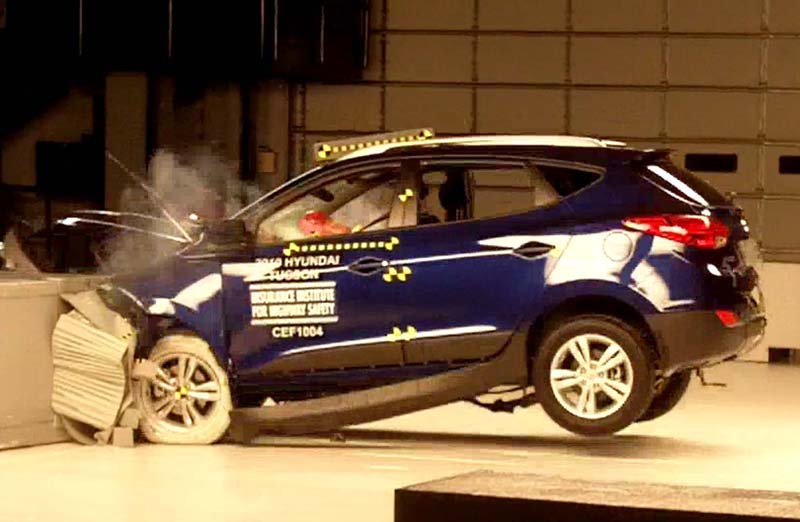 For a long time, crash tests administered by the National Highway Traffic Safety Administration (NHTSA), have been rating vehicles based on their ability to protect occupants in the event of a collision. Now, the government agency that is in charge of enforcing federal motor vehicle safety standards, has decided to transform its safety rating program, by including some new criteria and a new way for measuring potential injuries to vehicle occupants.
For a long time, crash tests administered by the National Highway Traffic Safety Administration (NHTSA), have been rating vehicles based on their ability to protect occupants in the event of a collision. Now, the government agency that is in charge of enforcing federal motor vehicle safety standards, has decided to transform its safety rating program, by including some new criteria and a new way for measuring potential injuries to vehicle occupants.
“NHTSA’s 5-Star Safety Ratings have set the bar on safety since it began in 1978, and today we are raising that bar,” said U.S. Transportation Secretary Anthony Foxx. “The changes provide more and better information to new-vehicle shoppers that will help accelerate the technology innovations that saves lives.”
Collision-Avoidance Technology to Be Included in Tests
In a press release, the NHTSA has informed the public that it will start rating crash-avoidance technologies, in a bid to assess vehicles’ capability of preventing accidents. This is a significant change to the way vehicle safety is assessed, since it aims to determine how well vehicles can avoid accidents and prevent injuries to occupants altogether, instead of just lessening the impact of a collision on occupants.
The new rating system will take into account how well a vehicle’s advanced collision-avoidance systems perform and how many of the nine recommended advanced safety technologies a vehicle has, including lane-departure warning and automatic emergency braking. On top of that, the agency will gauge vehicles’ pedestrian protection capabilities.
New Crash Test
In addition to the new technologies that will be tested by the NHTSA, the agency intends to introduce a new test that is supposed to measure how vehicle occupants are protected in an angled frontal crash. It’s called the frontal oblique crash test, which the NHTSA wants to add to the existing frontal, side and rollover crash tests. What’s more, the agency will start using a new type of dummies in the tests, that it says are more technologically advanced.
The new dummies will include the Test device for Human Occupant Restraint dummy (THOR), which is supposed to help the NHTSA measure the effects of a collision on vehicle occupants’ bodies. They have over 100 sensors, as compared to the 60 sensors that the dummies currently being used have.
NHTSA’s 5-Star Safety Ratings program was the first of its kind, and the idea has now spread around the world,” said NHTSA Administrator Mark Rosekind. “Today, we’re adding to that legacy of global safety leadership, ensuring that American consumers have the best possible information about how to protect themselves and their families, and taking a significant step forward in our efforts to save lives and prevent injuries.”
NHTSA will allow the public to review the proposed changes over the next 60 days, planning to make a final decision on whether to implement them in the current form or modify them by the end of next year.